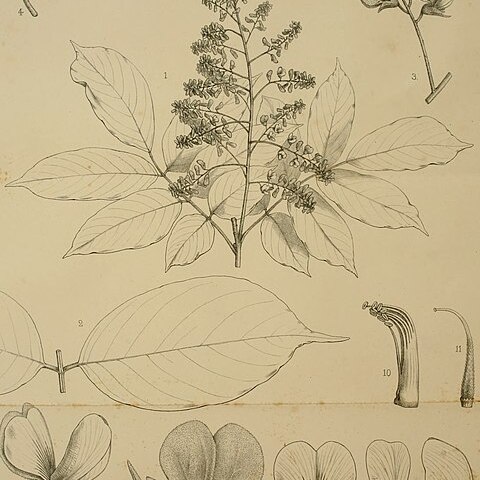Calyx tube campanulate; upper pair of teeth joined to form a very broad emarginate hood as large as the standard; lower 3 teeth narrowly lanceolate.
Inflorescences paniculate, axillary, the branches pseudoracemose, many-flowered; bracteoles large, oblong, sometimes persistent.
Leaves imparipinnate; leaflets in 2 or more pairs, opposite, stipellate; stipules very small, falling early.
Ovary sessile, pubescent, 5–7-ovuled; style filiform, glabrous, incurved with minute terminal stigma.
Standard oblate and emarginate to obcordate, shortly clawed, glabrous.
Upper stamen joined only near base of filament sheath.
Pod dehiscent, woody, compressed, 3–5-seeded.
Seeds, discoid or compressed-oblong.
Small trees, shrubs or lianes.
